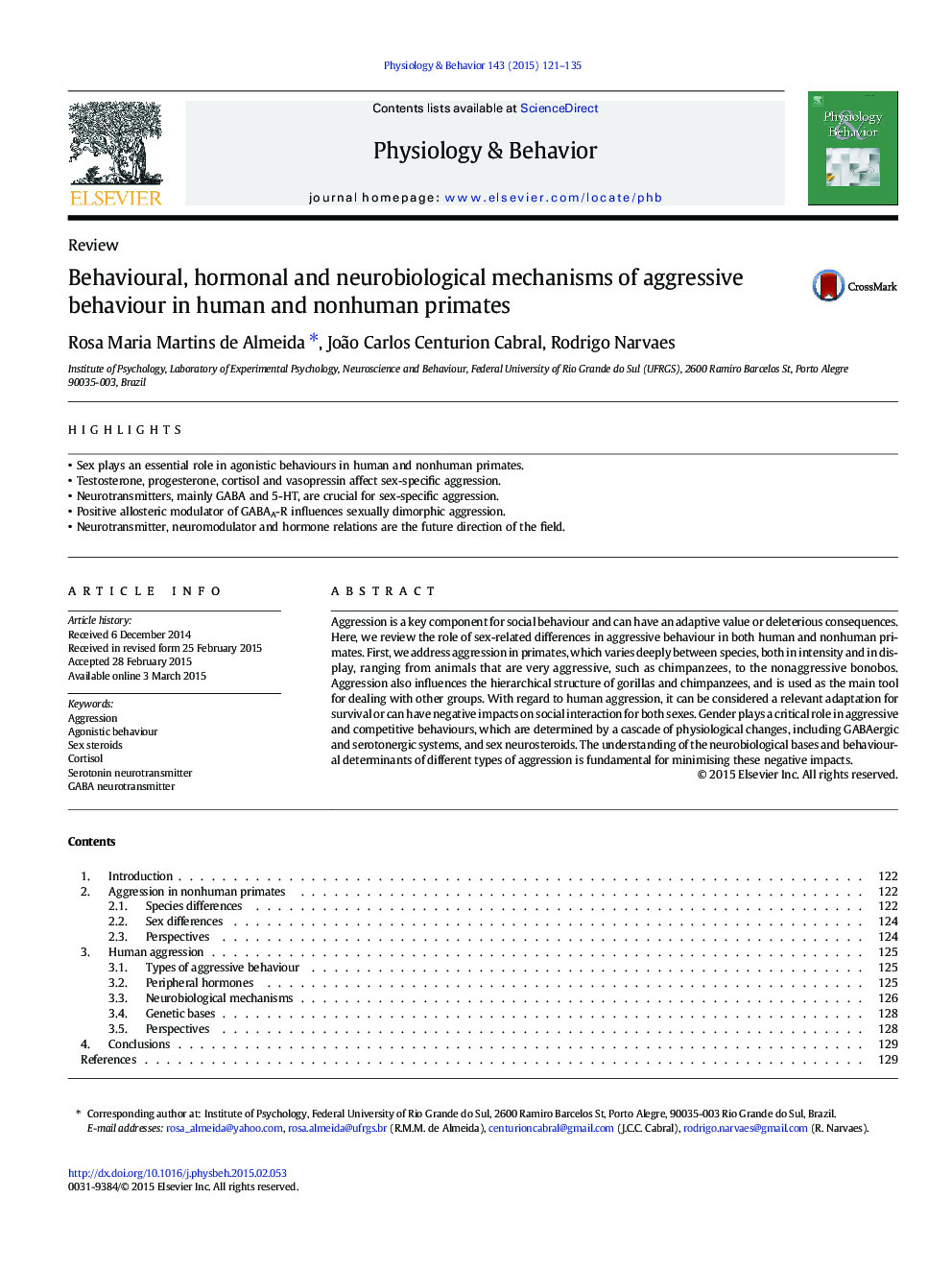| کد مقاله | کد نشریه | سال انتشار | مقاله انگلیسی | نسخه تمام متن |
|---|---|---|---|---|
| 5923703 | 1571174 | 2015 | 15 صفحه PDF | دانلود رایگان |
عنوان انگلیسی مقاله ISI
Behavioural, hormonal and neurobiological mechanisms of aggressive behaviour in human and nonhuman primates
ترجمه فارسی عنوان
مکانیسم های رفتاری، هورمونی و نوروبیولوژیکی رفتار تهاجمی در اولات های انسانی و غیر انسانی
دانلود مقاله + سفارش ترجمه
دانلود مقاله ISI انگلیسی
رایگان برای ایرانیان
کلمات کلیدی
موضوعات مرتبط
علوم زیستی و بیوفناوری
بیوشیمی، ژنتیک و زیست شناسی مولکولی
فیزیولوژی
چکیده انگلیسی
Aggression is a key component for social behaviour and can have an adaptive value or deleterious consequences. Here, we review the role of sex-related differences in aggressive behaviour in both human and nonhuman primates. First, we address aggression in primates, which varies deeply between species, both in intensity and in display, ranging from animals that are very aggressive, such as chimpanzees, to the nonaggressive bonobos. Aggression also influences the hierarchical structure of gorillas and chimpanzees, and is used as the main tool for dealing with other groups. With regard to human aggression, it can be considered a relevant adaptation for survival or can have negative impacts on social interaction for both sexes. Gender plays a critical role in aggressive and competitive behaviours, which are determined by a cascade of physiological changes, including GABAergic and serotonergic systems, and sex neurosteroids. The understanding of the neurobiological bases and behavioural determinants of different types of aggression is fundamental for minimising these negative impacts.
ناشر
Database: Elsevier - ScienceDirect (ساینس دایرکت)
Journal: Physiology & Behavior - Volume 143, 1 May 2015, Pages 121-135
Journal: Physiology & Behavior - Volume 143, 1 May 2015, Pages 121-135
نویسندگان
Rosa Maria Martins de Almeida, João Carlos Centurion Cabral, Rodrigo Narvaes,
